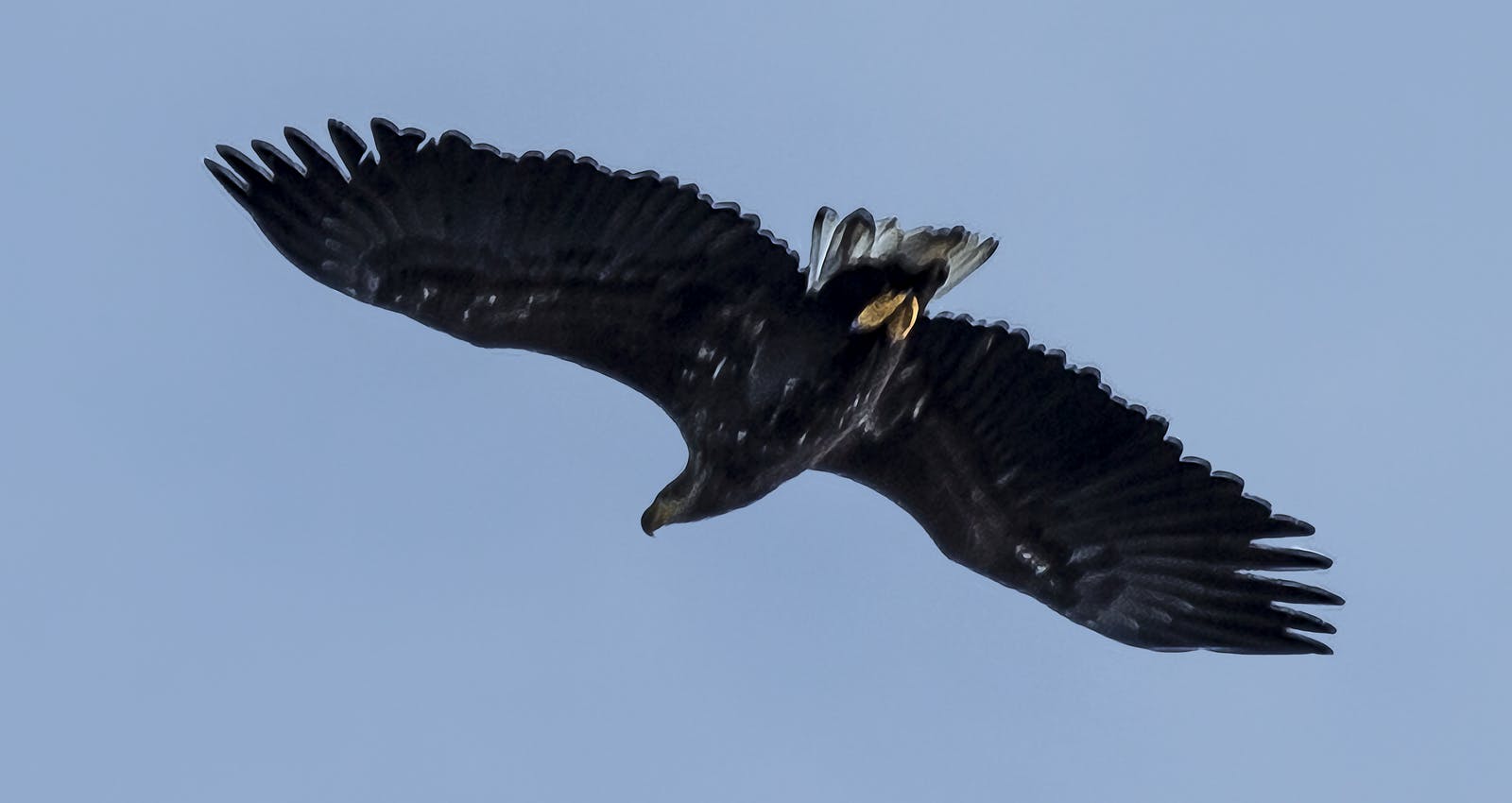
Spot the White-Tailed Eagle in Iceland: The King of Icelandic Birds
The white-tailed eagle (Haliaeetus albicilla) is often called the king of Icelandic birds due to his magnificence as a fully grown eagle is a graceful sight. The Icelandic eagle belongs to the hawk family (Accipitridae) and is the only member of that family in Iceland.
Discover the magical mysteries of Icelandic nature and wildlife at the Perlan Museum in Reykjavík. Inside, explore a treasure trove of fun activities that let you dive deep into all the amazing things Iceland has to offer. This special experience is made for all ages, bringing Iceland's incredible beauty and nature together in one fantastic place at the Perlan Museum. Read more about the exhibitions at Perlan here.
The Fall and Rise of the Icelandic Eagle
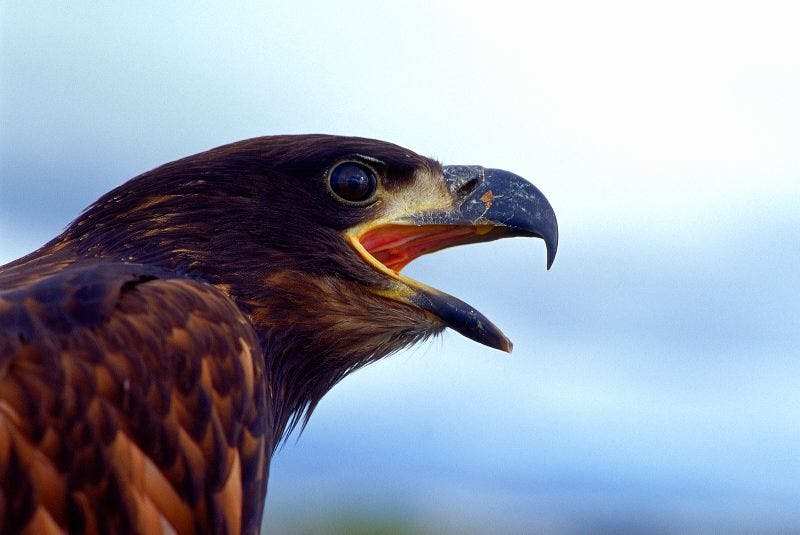
The white-tailed eagle is not only an interesting bird, but its story in Iceland also gives an important message about wildlife conservation. The eagle was hated and persecuted by people in the old days. Late in the 19th century, an association called “Vargafélag” was established in West Iceland, which rewarded each eagle that was killed until 1905. It is estimated that 95 eagles were killed for rewards around 1900. The eagle population was protected from killing in 1913. However, the population size decreased further and in 1960, only 20 pairs were found in Iceland. A common change of attitude towards wildlife resulted in the foundation of Birdlife conservation in Iceland in 1963, saving the white-tailed eagle from extinction.
The White-Tailed Eagle, One of the Largest Birds of Prey in the World
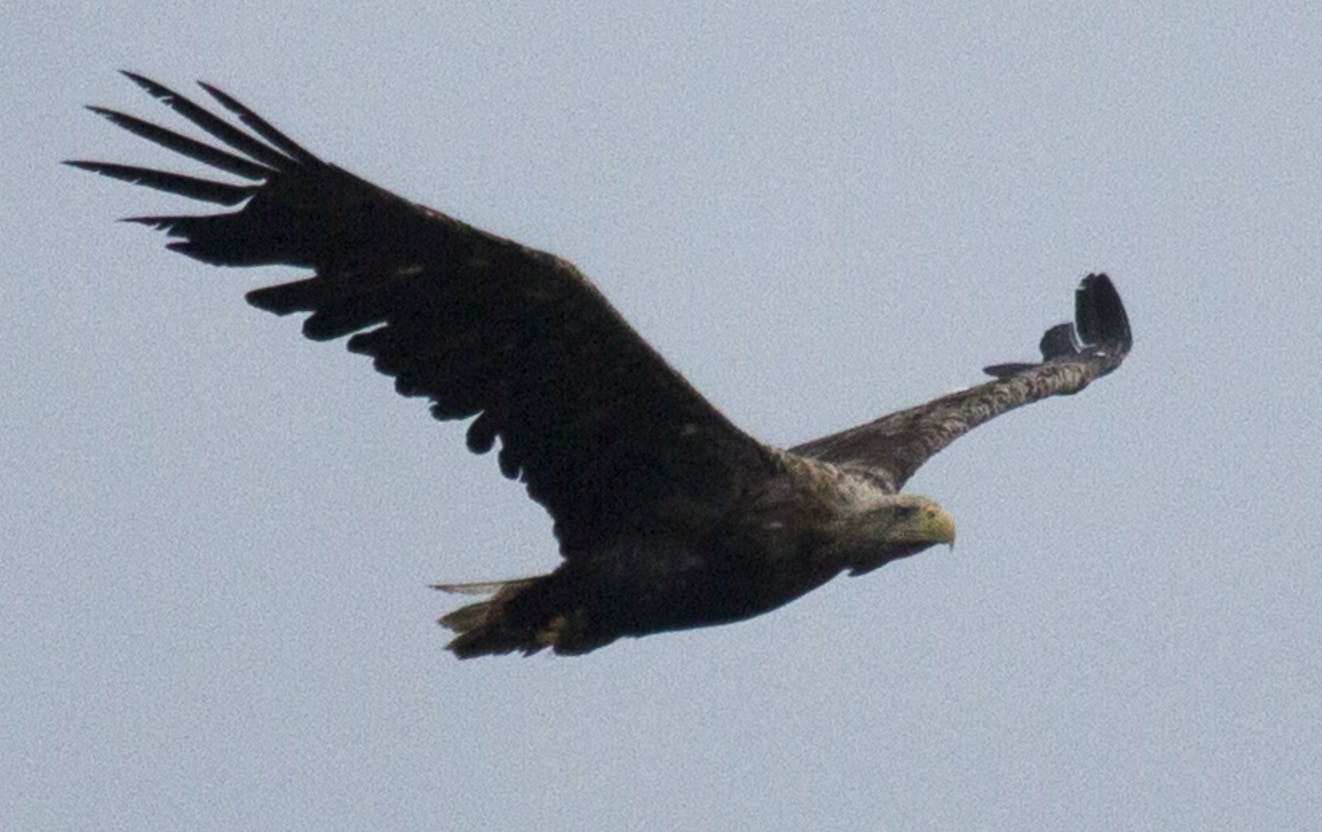
The Icelandic white-tailed eagle is one of the largest birds of prey in the world. Among its cousins are the Steller's sea eagle (Haliaeetus pelagicus), the Harpy eagle (Harpia harpyja) and the Philippine eagle (Pithecophaga jefferyi). An adult white-tailed eagle weighs 5-7 kilograms (11-15.5 lbs) and is 69-89 centimetres (27-35 in) in length.
Due to its size, the eagle is rather clumsy and slow compared to other birds of prey. The male, called “ari” in Icelandic, is smaller than “assa”, which is the female´s name. This sexual difference in size is a characteristic of birds of prey. The white-tailed eagle is brownish coloured but becomes paler with increasing age, especially around the head and neck. The wedge-shaped tail is white on adults but brown on juveniles.
The beak is hooked, and the feet are strong, both yellow on adults and dark on juveniles. The white-tailed eagle has an impressive 190.5 to 254 centimetres (75 - 100 in) wingspan. The wings are wide, broad and deeply fingered. Eagles are often seen far away, gliding high in the sky.
How Many Eagles Are Found in Iceland?
The population size of the Icelandic eagle is well known, with 80 breeding pairs in 2018. The main habitat is in West Iceland, where about 75% or 60 pairs breed at Breiðafjörður. Non-breeding eagles are 50-100, resulting in an autumn population of 210-260 birds. The white-tail eagle also nests in East Greenland, northern Europe and Asia to the Pacific, but the biggest breeding population is in Norway.
Like other birds of prey, the white-tailed eagle hunts mostly birds. Seabirds are popular as they are in great numbers in the eagle's habitat, especially eider ducks (Somateria mollissima), gulls (Laridae) and fulmars (Fulmarus glacialis). Eagles are also known for hunting fish, both lumpfish (Cyclopterus lumpus) and salmonids in shallow waters. The white-tailed eagle is also a scavenger, especially for juveniles during winter. This scavenger habit doomed many eagles when poisoning carrion to kill foxes was allowed. In 1964, all poisoning was banned by law, and the eagle population started slowly increasing.
Caring for the Nest and the Young
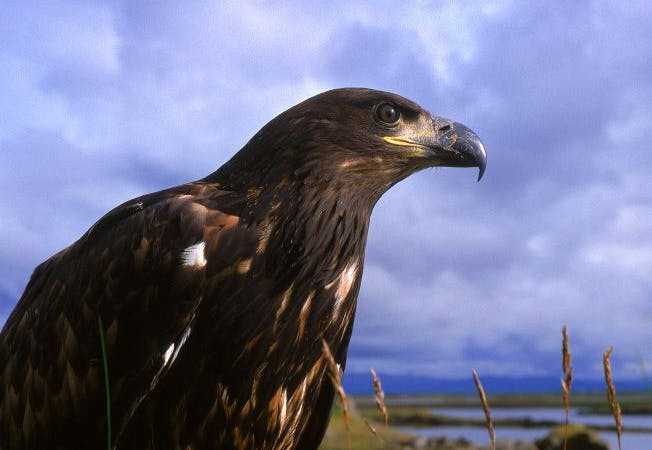
Eagle pairs own a territory where they stay most of the year and defend against other eagles. The couple builds a large nest made of sticks, angelica and seaweed lined with dry hay and feathers. Icelandic eagles choose to nest in small islets or low cliffs near the sea, but most of them fled to inaccessible high cliffs during the persecution period late in the 19th century.
The white-tailed eagle starts egg-laying early in spring, most often in the middle of April. The eggs are 1-3, white and hatch after 35-40 days of incubation. The female incubates most of the time while the male is hunting, though he is known to incubate for short periods. The young hatch is blind and almost naked. They are completely dependent on their parents, so the female stays with them in the nest for the first weeks. When the young mature, the female starts to hunt along with the male and leaves the young unattended in the nest. The young start flying at 10-11 weeks old but follow their parents around the territory until late fall.
Winter Adventures of Young Eagles
The white-tailed eagle is a stationary bird in Iceland. Adults stay mostly within their territory, but juveniles tend to roam the country during the winter. The winter months can be harsh for inexperienced hunters, so many juveniles become scavengers during that period. Young eagles are regularly found helpless due to fat and oils from carrions and the defensive mechanism of fulmars, which they have been trying to hunt. These fat and oils stick to the feathers, making the eagle flightless.
These birds are captured, cleaned, and, when healthy, returned to nature as each individual is very important for the eagle population. This winter wonder of juveniles is essential if the white-tailed eagle is to occupy his old forgotten territories around the country.
Icelandic Folklore: Do You Want a Flying Dragon?
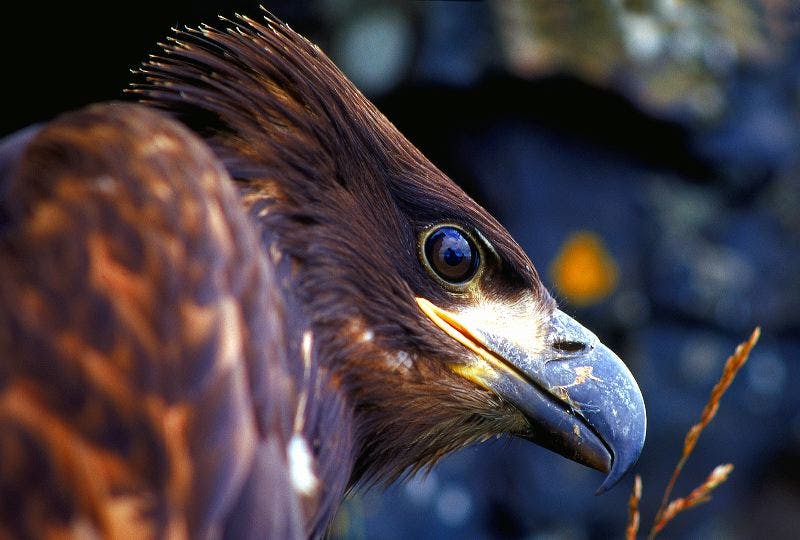
Eagles are popular in Icelandic folktales, poetry and landmarks. If somebody wants to own a flying dragon similar to the “Game of Thrones” dragons, he should sneak some pure gold into an eagle nest. If he is lucky, there is an infertile egg in the nest that will hatch a flying dragon. If not, don't worry. The gold will become a wishing stone and fulfil your wildest dreams.
Fun Facts About Eagles
- White-tailed eagles become sexually mature at 4-6 years old and can expect to reach thirty years. The oldest known eagle in the wild was 38 years old.
- Eagles are monogamous and pair for life.
- During courtship, eagle pairs dance with each other. They lock their claws together and fly attached where one of them is upside down. Often, they dive high from the air and then start the ceremony all over again. This eagle dance is a breathtaking sight.
- Today, the white-tailed eagle is well monitored by the Birdlife conservation „Fuglavernd“ and the Icelandic Institute of Natural History.
- According to Icelandic folklore, children became mindful if they drank milk through a quill of an eagle feather.
- It was believed that those wanting to see hidden things should carry an eagle eye or rub it around their own eyes.
- There are old Icelandic stories of eagles stealing lambs, cats and even infants.







